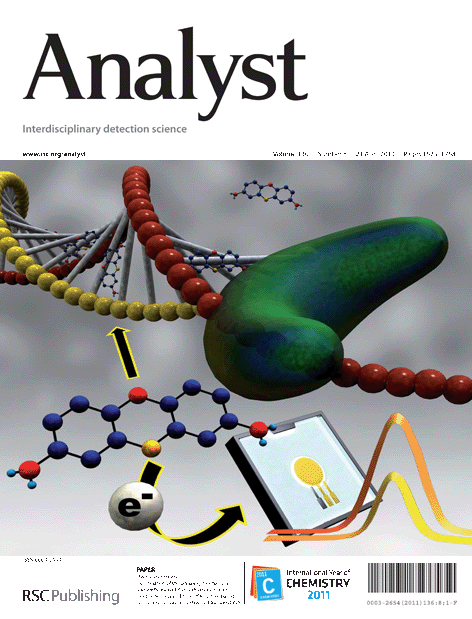- [COVER PAGE] Investigation of the signaling mechanism and verification of the performance of an electrochemical real-time PCR sy
- 관리자 |
- 2011-08-25 16:26:59|
- 9665
- 2011-08-25 16:26:59|
Byoung Yeon Won, Sujeong Shin, Songyi Baek, Ye Lim Jung, Taihua Li, Sung Chul Shin, Dae-Yeon Cho, Sang Bok Lee and Hyun Gyu Park
Analyst, 2011, 136, 1573-1579
DOI: 10.1039/C0AN00695E
Received 07 Sep 2010, Accepted 21 Jan 2011
First published on the web 14 Feb 2011
Abstract
The operation of an electrochemical real-time PCR system, based on intercalative binding of methylene blue (MB) with dsDNA, has been demonstrated. PCR was performed on a fabricated electrode-patterned glass chip containing MB while recording the cathodic current peak by measuring the square wave voltammogram (SWV). The current peak signal was found to decrease with an increase in the PCR cycle number. This phenomenon was found to be mainly a consequence of the lower apparent diffusion rate of the MB-DNA complex (Db = 6.82 × 10−6 cm2 s−1 with 612 bp dsDNA) as compared to that of free MB (Df = 5.06 × 10−5 cm2 s−1). Utilizing this signal changing mechanism, we successfully demonstrated the feasibility of an electrochemical real-time PCR system by accurately quantifying initial copy numbers of Chlamydia trachomatis DNA templates on a direct electrode chip. A standard calibration plot of the threshold cycle (Ct) value versus the log of the input template quantity demonstrated reliable linearity and a good PCR efficiency (106%) that is comparable to that of a conventional TaqMan probe-based real time PCR. Finally, the system developed in this effort can be employed as a key technology for the achievement of point-of-care genetic diagnosis based on the electrochemical real-time PCR
| 첨부파일 |
|
|---|


